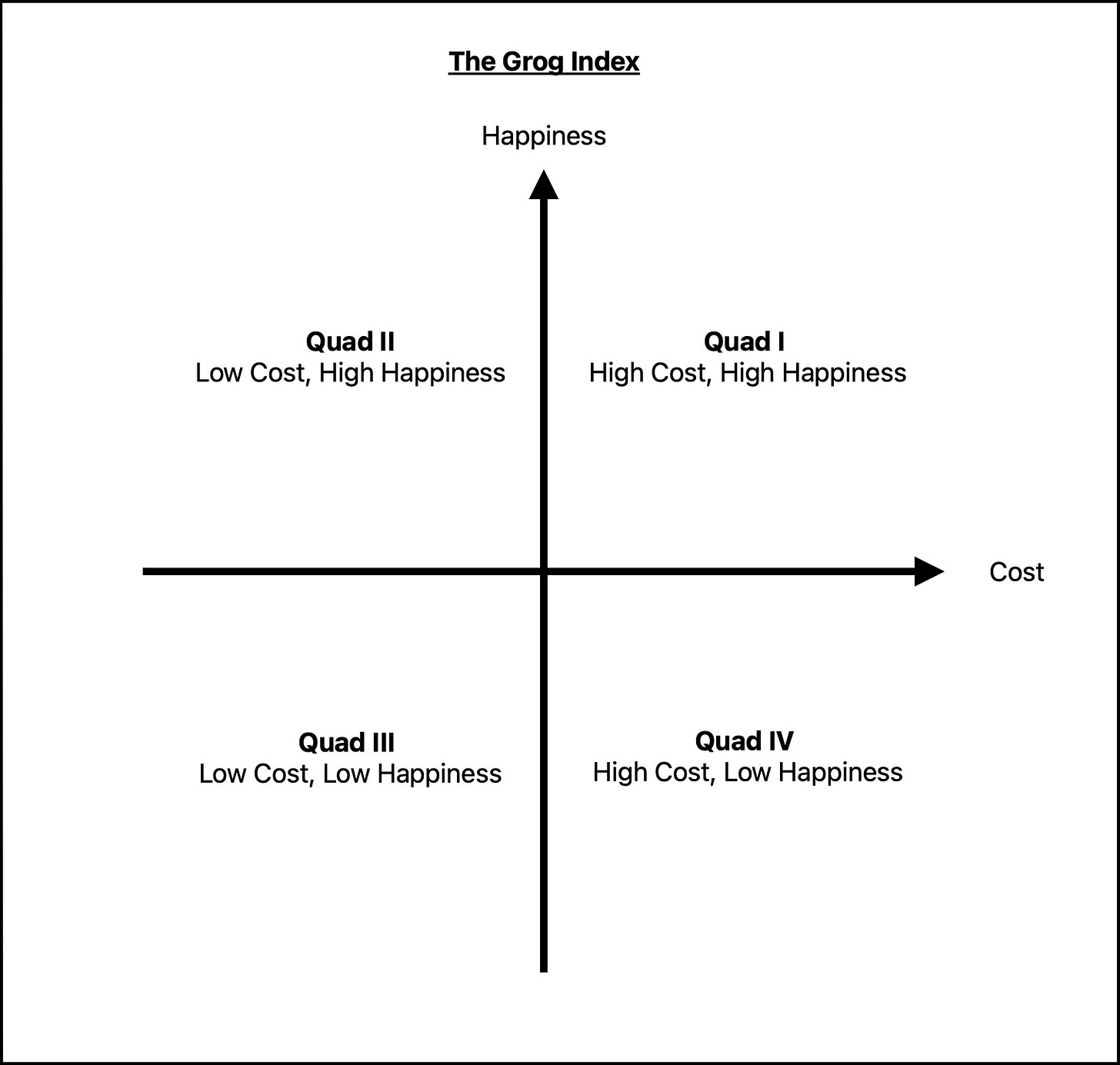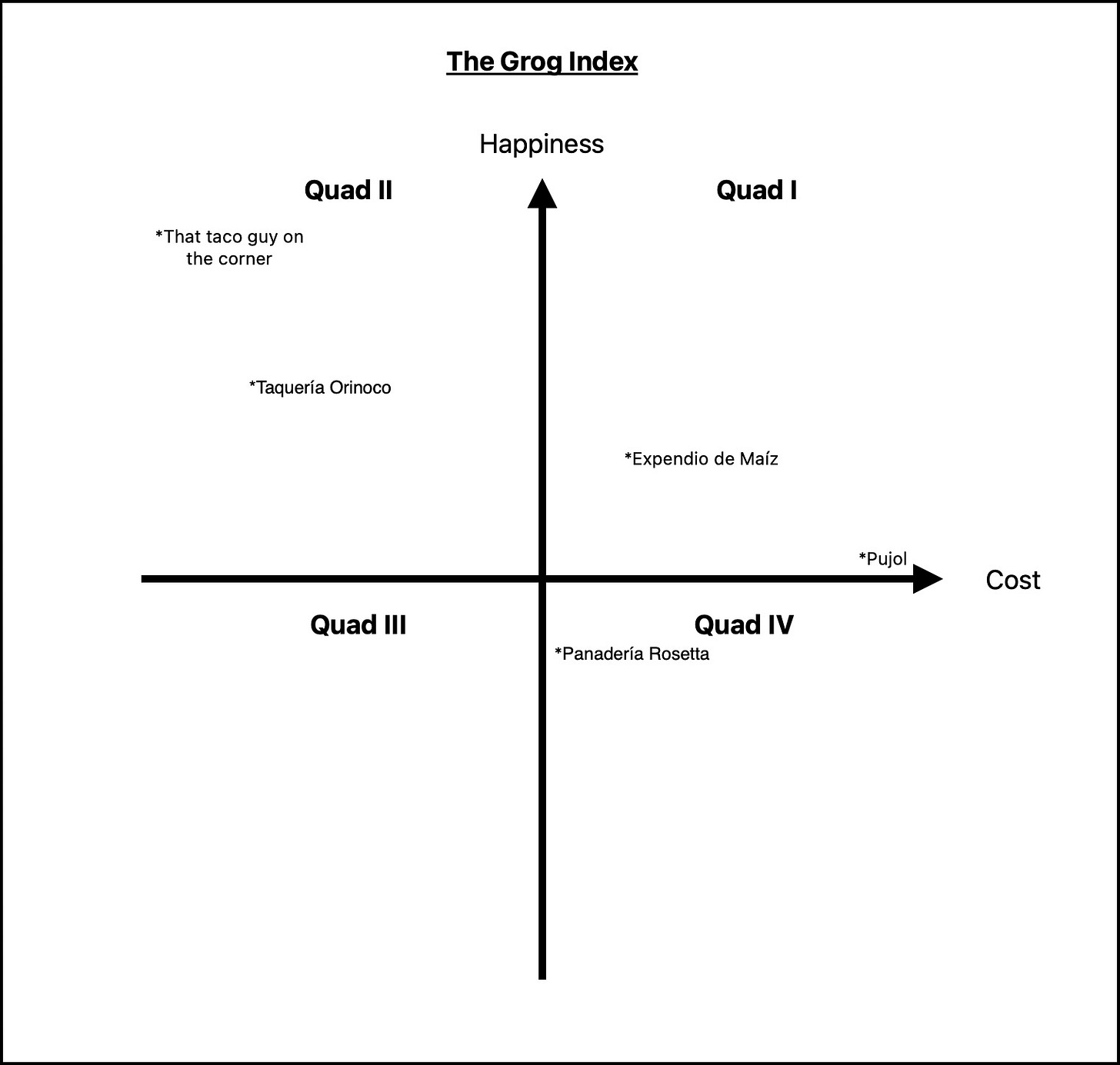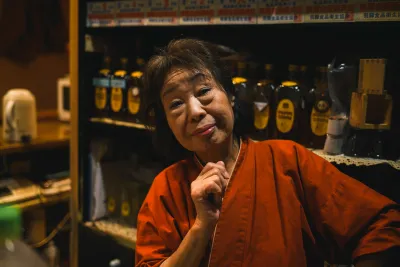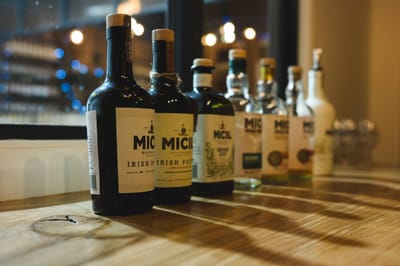The Grog Index
Hello friends - I’ve been thinking about food. Honestly, I spend a good chunk of each day thinking about food, but lately it’s been about restaurants. Specifically, how to find a few good ones when we travel.
I just got back from Paris a few weeks ago and I’m about to head off to Tokyo shortly. Like everyone else who obsesses over where and what to eat, trip prep means a little research. First I’ll see if any of my trusted voices have recommendations, then I’ll run a cursory search around the internet. It’s an iterative process and eventually I whittle the list down to a handful of spots to check out.
But lately it feels like there’s too much noise and just as much mediocrity. Maybe it’s because we’ve forgotten what we’re looking for. What does a good meal even mean in 2025? Craft? Hype? Vibes? Sadly I think it’s the latter. We’re in a period of overcorrection from the foodie days of the late aughts, with too much emphasis on ~vibes~ now.
Some seek out highly coveted seats at Michelin-starred restaurants, convincing ourselves with each bite that spending half our rent money is worth the clout. Others scroll through Google reviews when we get to a new city, parsing the 4.6 vs 4.7 star rating like it actually means something. Or we stand in line to eat a $25 sandwich because someone on Instagram said it “altered their brain chemistry” or whatever.
Neither of those options seems like they meet the moment well, each biased in their own particular way. If you can afford a tasting menu, you get a plaque outside and a thousand-word essay. Otherwise you’re stuck with a lazy 1-5 rating or a 10-second iPhone clip filmed in bad lighting. If the old systems only serve the elite, and the new systems only serve the hype machine, then maybe we need something made for actual people.
The Daily Grog is a 100% reader-supported labor of love (and occasional despair). Paid members get extra perks - including a free fine art print of one of my photos. It’s basically buying me a beer once a month, and I promise to send stories and photos in return.
If I had my druthers, how we recommend places would look a lot different. So I’ve been thinking about a new system. Enter the Grog Index, a statistically flawed but spiritually accurate way of thinking about food. The Grog Index is simple. Think of it as plotting happiness relative to cost, with cost on the x-axis, and happiness on the y-axis. Using those two vectors, we can plot our meals on four quadrants.

Quadrant I is high cost, high happiness. These are places that might be expensive but worth the splurge and you don’t totally hate yourself afterwards. Quadrant II is low cost, high happiness. This is the sweet spot, one that probably smells like frying oil and pure joy. Quadrant III is low cost, low happiness. These are the throwaway meals, forgettable but fine, and sometimes necessary. And finally, Quadrant IV where high cost meets low happiness. This is regret cuisine, the places that force you into a sudden state of class consciousness.
So how exactly does it work? Let’s look at Mexico City. First up, Pujol, a restaurant with two Michelin stars and a mainstay on all the “best of” lists. But Pujol is a low Quad I with high cost and middling happiness, perilously close to Quad IV. Expendio de Maíz, which has one Michelin star, is a bit pricey, but unique enough to warrant the waitlist and fuss - definitely Quad I. Taquería Orinoco, a trendy sit-down taco joint with a few different outposts around the city, is Quad II, but skews to the right because it’s still pricey as far as tacos go. Panadería Rosetta, famous for their guava roll, is unfortunately in Quad IV, in large part because the line can be outrageous and I’m very unhappy when surrounded by people taking pictures of their food. The taco guy on the corner absolutely slaps and is in the top left corner of Quad II.

Naturally, there are limitations. Happiness is subjective and personal, but in this context I think of happiness as a squishy, gut instinct assessment of a meal. You might be in it for the ambiance, or strictly for the food, or maybe you like a place just because. Obviously, true cost is relative. A $1 taco in Mexico City hits different depending on your passport. And don’t forget the emotional costs as well, like waiting in line or going out of your way for a particular meal.
The beauty of a metric-free, return-on-indulgence system is the buffer it leaves for all that relativity. I’d bet most places net out in the same quadrant across opinions; the real debate would be which corner. I should note that the Grog Index is intentionally a little divisive by design - price and hype are often mistaken for taste, though neither is a reliable proxy. One person’s Quad II taco stand is another’s health code violation. In any case, the Grog Index doesn’t promise objectivity because food is hardly objective anyway.
To be clear, the Grog Index is not a measure of quality. There are far more knowledgeable people out there for that. The main benefit of the Grog Index is that it cuts through much of the fuss by restoring some context and requiring a little introspection of the eater. I also think it would lead to more serendipitous food-based shenanigans by providing a simple way to choose a meal on the road without over-optimizing. If you revel in simplicity, aim for Quad II. If you’re chasing novelty, accept Quad I but watch out for Quad IV creep. Only venture into Quad III when it’s dire out there.
That all makes total sense, right? Anyway, maybe I’ll have to use it when I send out some Paris recommendations here real soon. In the meantime, if you have any Tokyo/Osaka recs, drop ‘em in the comments and tell me their quadrant.
Skylar
No spam, no sharing to third party. Only you and me.





Member discussion